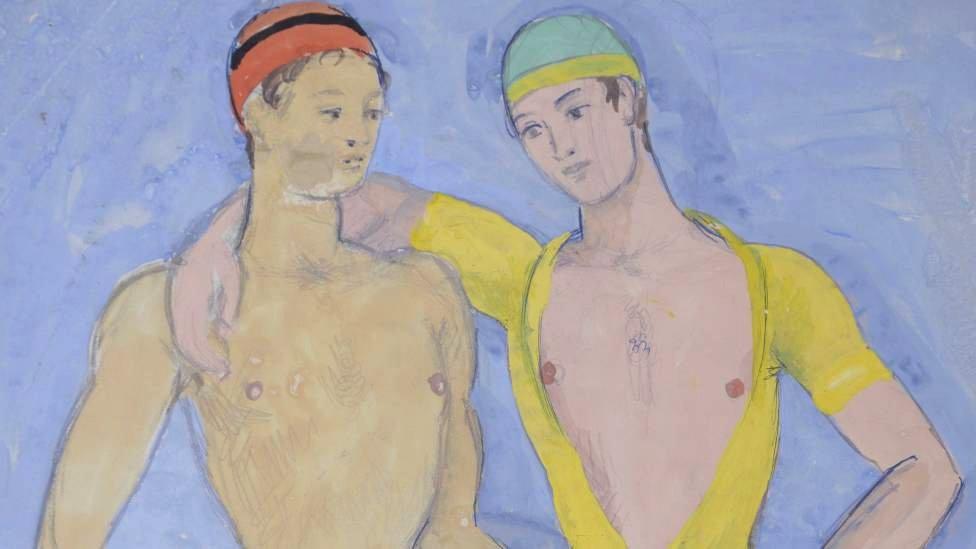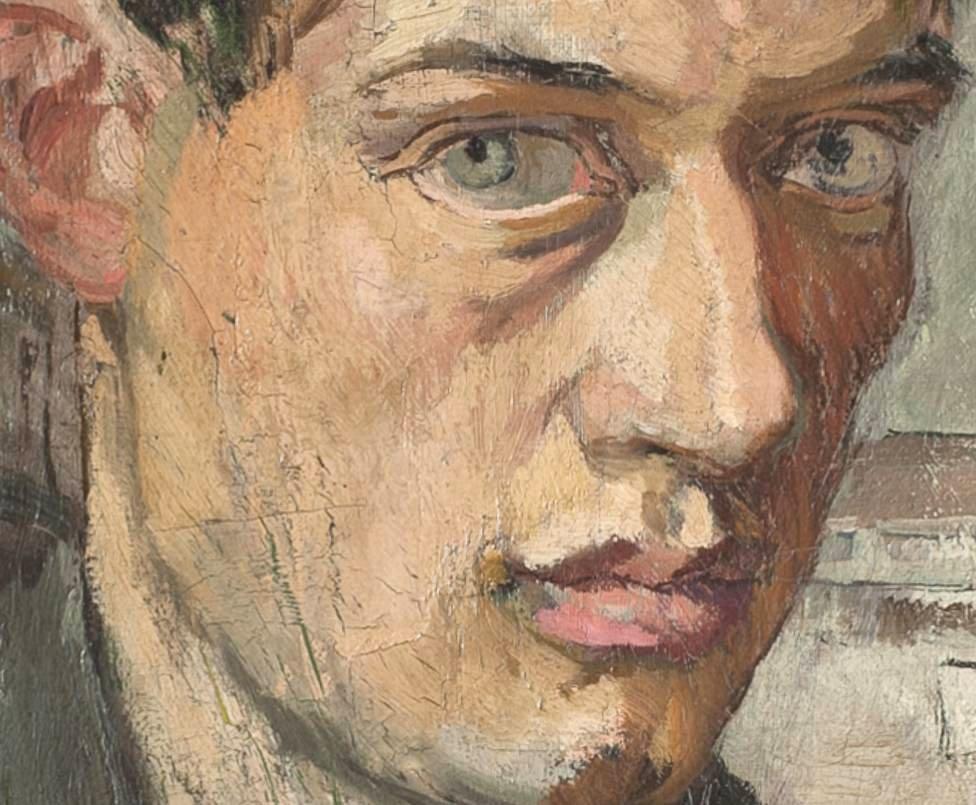Duncan Grant: Artist's 'lost' erotic drawings worth £2m discovered
- Published
A massive haul of drawings by Bloomsbury Group artist Duncan Grant is finally made public
Hundreds of explicit drawings by Duncan Grant, one of Britain's most famous mid-20th Century painters, have been found under a bed.
"Everybody thought they had been destroyed," said Darren Clarke, head of collections at Charleston, the Sussex farmhouse where Grant lived and worked.
In fact, the collection of mostly male sexual encounters was passed from lover to lover, friend to friend, in secret.
The 422 works on paper are "a revelation", Dr Clarke said.
They depict "every conceivable act of couples... it's quite a Karma Sutra of Duncan Grant's sexual imagination".
Grant was a household name in Britain between the wars, as famous for his portraits as his landscapes.
A member of the Bloomsbury group of artists, writers and thinkers, he had a child with Vanessa Bell, the sister of writer Virginia Woolf. But among his many male lovers were the economist John Maynard Keynes and the historian Lytton Strachey - who was also his cousin.
Grant was born in 1885, seven months before an act was passed in Parliament that criminalised all male homosexual sex in England. Ten years later it would be used to convict Oscar Wilde.

The announcement of the drawings' rediscovery is part of the launch of the BBC #MuseumPassion season
"All the works were done in the 1940s and 1950s," a time when homosexuality was still illegal, explained Dr Clarke.
"There's a strong theme in the work of interracial sex, of white and black males together. Duncan Grant had black friends who were models, who were also lovers throughout his life."
Dr Clarke said the drawings were "significant" because: "This is the inner life. This is his passion. This is what he was interested in."
But Grant also knew how dangerous the works could be. In 1959 he gave them to his friend and fellow artist Edward Le Bas in a folder marked "These drawings are very private".
'The fate of a lot of queer history'
When Le Bas died in 1966, it was widely believed they had been destroyed, even burned, because they were so explicit.
"That is the fate of a lot of queer history," said Dr Clarke. "Relatives have destroyed it to protect the reputations of the person who has died or the family as a whole."
However, the truth was they were rescued and eventually passed to theatre designer Norman Coates 11 years ago. And where did he keep them? "Under my bed," he said. "It's rather appropriate isn't it?"

The works have been given to Charleston, Grant's former home and studio
He would occasionally "haul them out" to show to friends. "Every single person was startled by them because they're very graphic," he said.
"You couldn't have sex in some of those positions, we all agreed - although I think some went home and tried.
"But I would be careful not to show them to certain other people, like my mother."
Coates has however now decided the drawings need a wider audience, so has given them to Charleston, Grant's former home and studio in Lewes, East Sussex.
"They have been weighing heavily on my mind and I've been wondering who I might pass them on to and I thought this could go on for centuries if we don't kind of stop it.
"So I just think the time has come, the world has changed, Duncan Grant has been gone a long time." The artist died in 1978 at the age of 93.

Self-portrait, c1910, Duncan Grant (1885-1978)
"They need to come out of the closet now and be considered and looked at and thought about," Coates added.
"They are a serious collection, as interesting as the erotic drawings on Greek vases and Indian erotic drawings."
Charleston is currently closed to visitors during the coronavirus pandemic. It says it will not sell the drawings, which are valued at £2m.
But it does hope the collection will encourage donations when it launches a crowdfunding campaign with The Art Fund next week to raise money to help it reopen - and put these private drawings on public display for the first time.
The BBC is running a special season titled #MuseumPassion across television, radio and digital from 8-16 October, celebrating museums, their role in society and what the future holds for them as they reopen from Covid-19 lockdown.